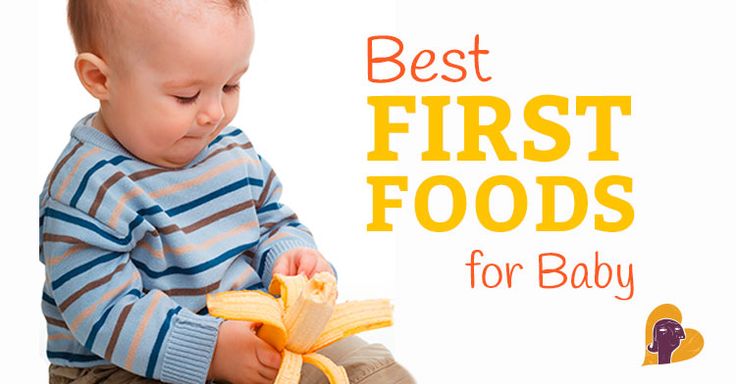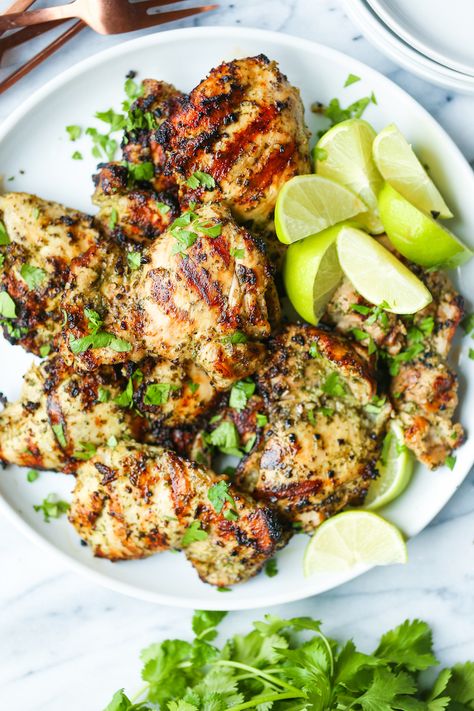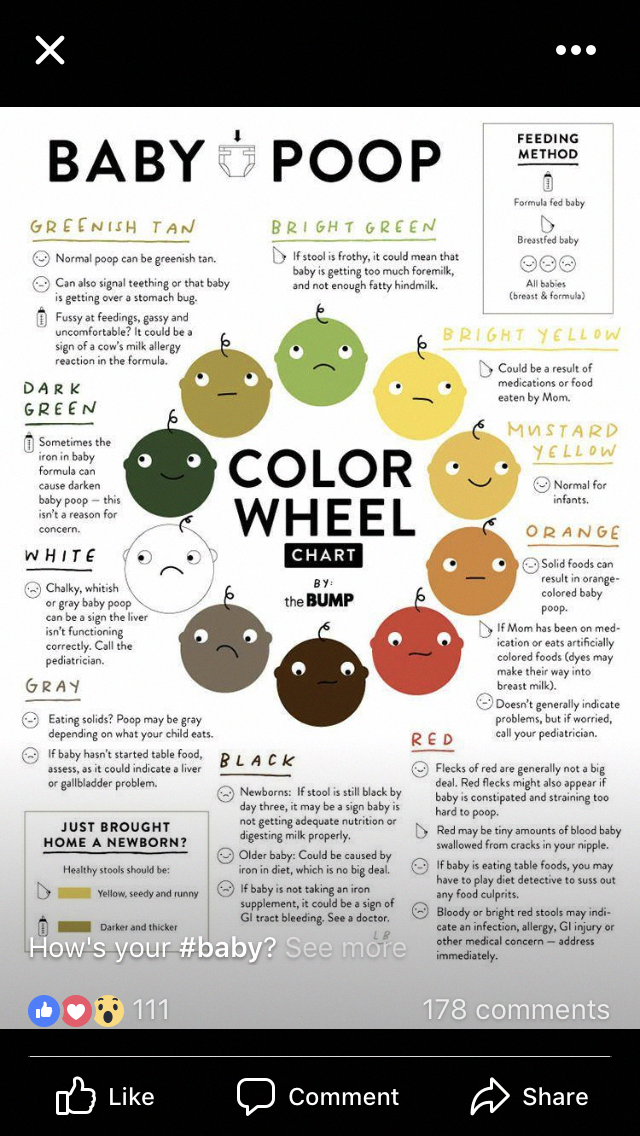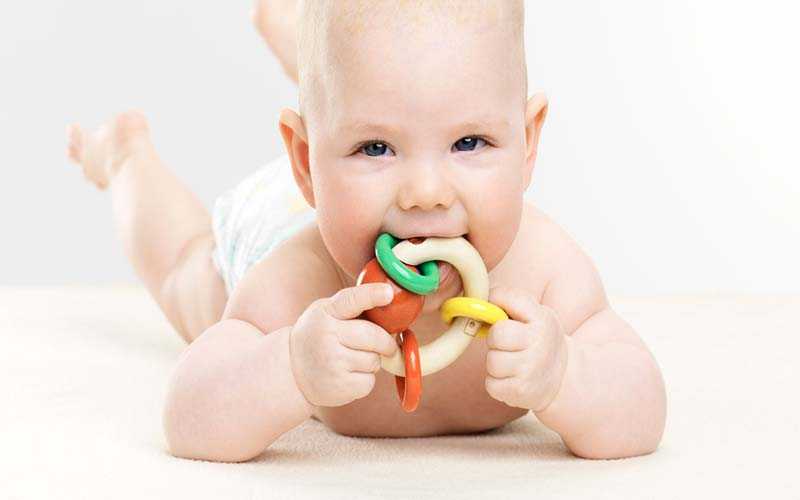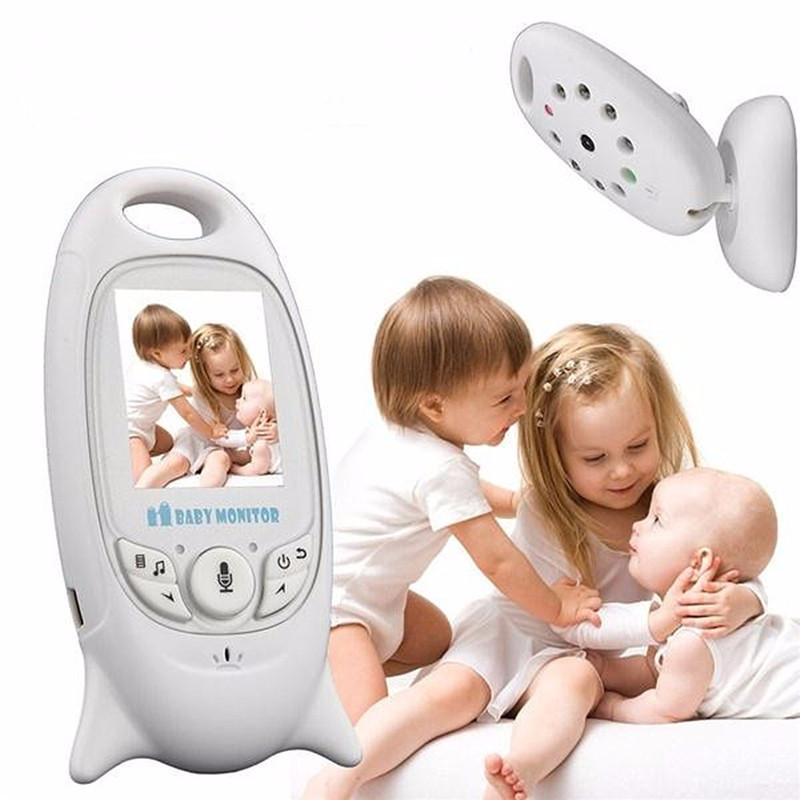Eczema baby food
7 Foods to Avoid in Babies and Toddlers with Eczema
Also known as atopic dermatitis, eczema is a common condition characterized by red, itchy, and inflamed skin.
Although eczema can affect anyone, it’s especially common among children. In fact, about 60% of cases develop within the first year of life (1).
Many factors can worsen eczema flare-ups, including foods.
Research shows that certain foods may trigger eczema in 20–30% of cases of moderate to severe eczema. Additionally, foods are more likely to worsen symptoms in children and infants under age 5 (2).
While foods do not directly cause eczema, making dietary changes could help reduce symptoms, especially for those who have a sensitivity or allergy to specific foods (3).
In children with a confirmed food allergy, eliminating trigger foods from the diet may significantly improve symptoms of eczema within just 1–2 months (4).
However, keep in mind that it’s not necessary to avoid all the foods listed below to help manage your child’s eczema.
SummaryCertain foods may worsen symptoms of eczema, especially in children and infants. However, it depends on the child’s particular allergies or sensitivities, so speak with a healthcare professional to determine which foods might be best to eliminate.
Preventing food allergies
Introducing common allergen foods to an infant early in life may actually help prevent them from developing food allergies, including to eggs and peanuts (5).
If you’re considering eliminating certain foods from your child’s diet or you’re concerned about your child developing food allergies, speak with a healthcare professional. They can help you develop a diet plan based on your child’s needs.
Research has shown that eliminating one or more of these foods from the diet may significantly improve symptoms of eczema in some children.
1. Dairy
Not only is a cow’s-milk allergy the most common food allergy in young children, but dairy products like milk, yogurt, and cheese are also common triggers for eczema (6).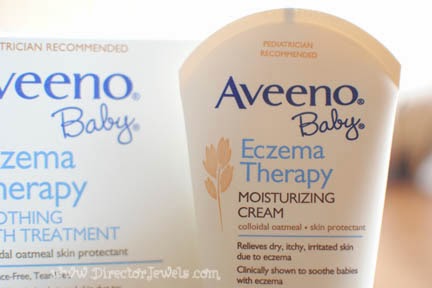
One study in 132 children with food-triggered eczema found that 39% of children developed an immediate reaction after consuming cow’s milk (2).
A 2019 review reported that infants with eczema were six times more likely to have an allergy to cow’s milk, eggs, or peanuts at 12 months of age compared with infants without eczema (7).
Fortunately, there are several simple plant-based milks available as an alternative to cow’s milk, including soy milk, almond milk, and cashew milk.
However, be sure to check the ingredients lists carefully, as some of these products are high in calories and added sugar.
2. Fish and shellfish
The term “shellfish” refers to any aquatic animal that has a shell-like exterior, including crabs, lobsters, oysters, mussels, and shrimp. Meanwhile, most types of fish, including salmon, trout, tuna, and tilapia, have fins and scales.
Although both fish and shellfish are highly nutritious and can be great sources of protein and omega-3 fatty acids, they can also worsen symptoms of eczema for many children.
This is because fish and shellfish allergies are common and can cause a wide range of side effects, including hives, itching, and eczema (8, 9).
While some children may be sensitive to finned fish or shellfish, others may experience reactions only to certain types, such as crustaceans (like shrimp and crab) or mollusks (like oysters and clams) (8).
A pediatrician or registered dietitian can help determine which specific types of seafood may trigger symptoms for your baby or toddler.
3. Soy products
For those with a soy allergy, consuming soy products like soy milk, tofu, or edamame can cause an immune response, which could trigger skin reactions such as eczema (10).
Compared with allergies to other major food allergens, soy allergies are not nearly as common (11, 12).
For example, one 2013 study in 175 people with eczema found that around 30% had an immune reaction to soy. However, only about 3% of people experienced symptoms, such as hives and itching, after consuming soy (13).
If your baby or toddler has a sensitivity to soy products, keep in mind that many processed foods contain soy-based ingredients, all of which could worsen symptoms of eczema. Examples include (14):
- soy sauce
- tamari
- soy protein
- textured vegetable protein
4. Eggs
Share on PinterestElena Botta/Getty Images
Some babies or toddlers may have an allergy to the proteins found in egg whites or yolks, which could trigger symptoms of eczema (15).
Egg allergy is one of the most common food allergies, affecting an estimated 1.3% of children under 5 in the United States (16).
Furthermore, one study reported that infants with eczema are nearly 6 times as likely to develop an egg allergy by 12 months of age compared with those without eczema (7).
However, most egg allergies in children resolve by around age 5 (17).
Additionally, some babies and toddlers who are sensitive to eggs may be able to tolerate them in some forms, such as baked eggs (16).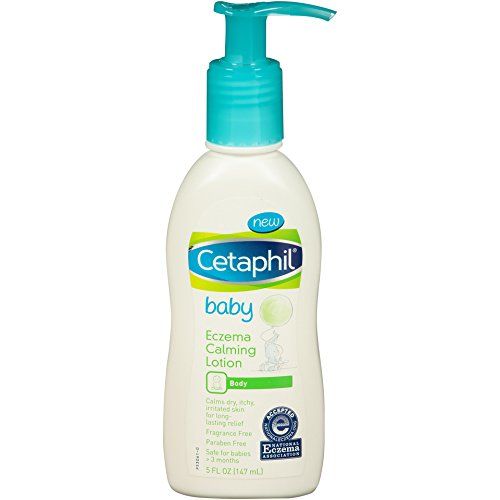
5. Tree nuts
Tree nuts could worsen eczema for many young children with a tree nut allergy. Examples of tree nuts include:
- almonds
- cashews
- walnuts
- pecans
Tree nut allergies are very common and may affect up to 4.9% of children and adults (18).
Unfortunately, tree nut allergies can be very serious, and some research suggests that more severe reactions to tree nuts are often associated with severe cases of eczema, asthma, and seasonal allergies (19).
In addition to avoiding tree nuts specifically, your child may need to avoid foods that contain tree nuts, including pesto, nut butters, coconut products, and certain types of cereals, cookies, crackers, or candies.
6. Wheat or gluten
Wheat is a type of cereal grain and a staple ingredient in many foods, such as bread, pasta, and baked goods.
Gluten is a specific protein found in wheat, barley, and rye that gives dough its structure and elasticity.
For those with a wheat allergy, consuming products that contain wheat may worsen eczema and could also cause other symptoms, including hives, asthma, and digestive issues (20, 21).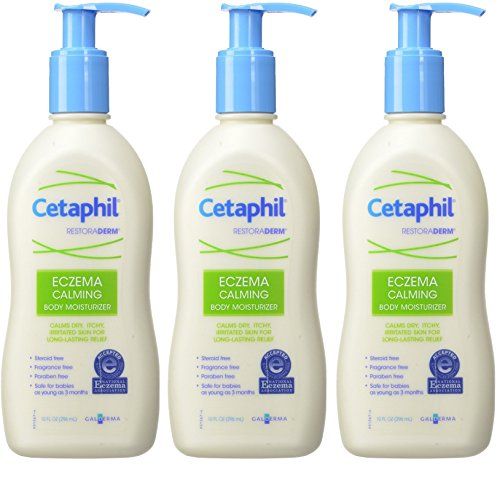
Eczema and skin rashes can also be caused by a sensitivity to gluten, as well as by celiac disease, an autoimmune condition that triggers an immune reaction when gluten-containing foods are consumed (22, 23, 24).
While there is no test available to diagnose non-celiac gluten sensitivity, your child’s pediatrician can use a skin or blood test to help determine if your child has celiac disease or an allergy to wheat.
7. Peanuts
Peanuts are a common allergen and are associated with several skin reactions, including rashes, hives, itching, and eczema (25).
Peanut allergies are especially common among babies and toddlers, as most peanut allergies appear within the first 2 years of life (25).
Additionally, some research shows that peanut allergies are more common among infants with moderate to severe eczema (26).
If peanuts cause flare-ups of eczema for your baby or toddler, try swapping other ingredients into your favorite recipes instead, such as seeds or seed butters.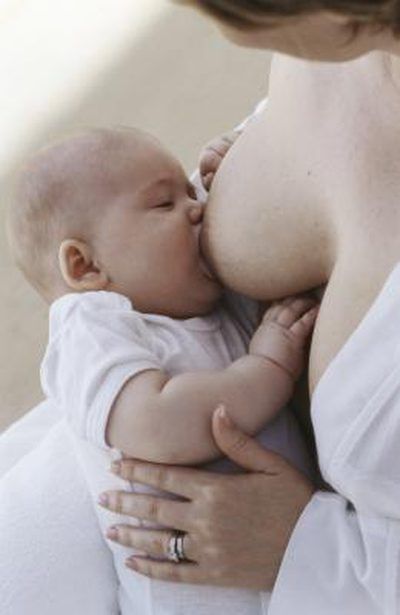
SummarySome of the most common foods that cause allergies in infants and toddlers are dairy, fish, shellfish, soy products, wheat, peanuts, tree nuts, and eggs.
Several foods can be beneficial for eczema and may help reduce symptoms such as itching and inflammation.
For example, fruits and vegetables are rich in antioxidants, which are compounds that can protect against oxidative stress, cell damage, and inflammation (27).
Although studies in humans are still limited, some research suggests that reducing oxidative stress could play a role in managing eczema (28).
Increasing your intake of probiotics through fermented foods or supplements may also be helpful.
According to one review of 13 studies, certain strains of probiotics were effective at reducing eczema severity in children. These strains included Lactobacillus fermentum and Lactobacillus salivarius (29).
However, more research is needed because other studies have found that probiotics do not have a significant effect on symptom severity or quality of life for those with eczema (30).
SummaryIncluding more foods rich in antioxidants and probiotics in your child’s diet could be beneficial for eczema, but more research is needed.
For many babies and toddlers, diet can play a key role in managing symptoms of eczema.
While certain foods can make eczema symptoms worse, others may decrease inflammation and oxidative stress, which could reduce symptoms.
However, it’s best to talk with a pediatrician or dietitian before making any changes to your child’s diet, especially because eliminating certain foods from their diet could make it harder for them to meet their nutritional needs.
Additionally, keep in mind that many other factors can contribute to eczema and some children may also need other types of treatment to help relieve symptoms.
Just one thing
Try this today: Consider experimenting with some at-home remedies for your child’s eczema. Check out this article for a few ideas to help provide relief for your baby or toddler.
7 Foods to Avoid in Babies and Toddlers with Eczema
Also known as atopic dermatitis, eczema is a common condition characterized by red, itchy, and inflamed skin.
Although eczema can affect anyone, it’s especially common among children. In fact, about 60% of cases develop within the first year of life (1).
Many factors can worsen eczema flare-ups, including foods.
Research shows that certain foods may trigger eczema in 20–30% of cases of moderate to severe eczema. Additionally, foods are more likely to worsen symptoms in children and infants under age 5 (2).
While foods do not directly cause eczema, making dietary changes could help reduce symptoms, especially for those who have a sensitivity or allergy to specific foods (3).
In children with a confirmed food allergy, eliminating trigger foods from the diet may significantly improve symptoms of eczema within just 1–2 months (4).
However, keep in mind that it’s not necessary to avoid all the foods listed below to help manage your child’s eczema.
SummaryCertain foods may worsen symptoms of eczema, especially in children and infants. However, it depends on the child’s particular allergies or sensitivities, so speak with a healthcare professional to determine which foods might be best to eliminate.
Preventing food allergies
Introducing common allergen foods to an infant early in life may actually help prevent them from developing food allergies, including to eggs and peanuts (5).
If you’re considering eliminating certain foods from your child’s diet or you’re concerned about your child developing food allergies, speak with a healthcare professional. They can help you develop a diet plan based on your child’s needs.
Research has shown that eliminating one or more of these foods from the diet may significantly improve symptoms of eczema in some children.
1. Dairy
Not only is a cow’s-milk allergy the most common food allergy in young children, but dairy products like milk, yogurt, and cheese are also common triggers for eczema (6).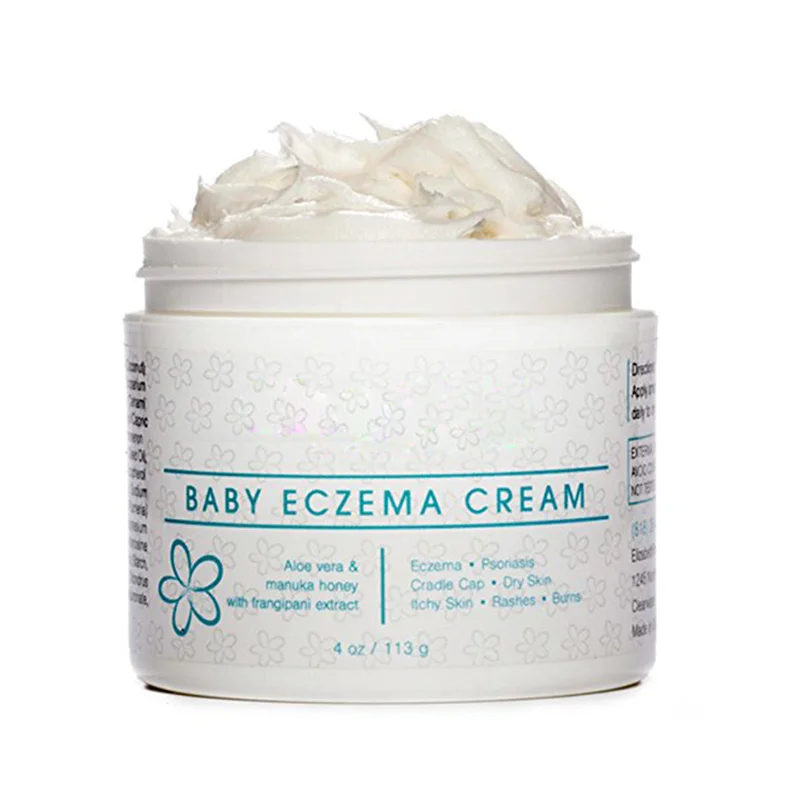
One study in 132 children with food-triggered eczema found that 39% of children developed an immediate reaction after consuming cow’s milk (2).
A 2019 review reported that infants with eczema were six times more likely to have an allergy to cow’s milk, eggs, or peanuts at 12 months of age compared with infants without eczema (7).
Fortunately, there are several simple plant-based milks available as an alternative to cow’s milk, including soy milk, almond milk, and cashew milk.
However, be sure to check the ingredients lists carefully, as some of these products are high in calories and added sugar.
2. Fish and shellfish
The term “shellfish” refers to any aquatic animal that has a shell-like exterior, including crabs, lobsters, oysters, mussels, and shrimp. Meanwhile, most types of fish, including salmon, trout, tuna, and tilapia, have fins and scales.
Although both fish and shellfish are highly nutritious and can be great sources of protein and omega-3 fatty acids, they can also worsen symptoms of eczema for many children.
This is because fish and shellfish allergies are common and can cause a wide range of side effects, including hives, itching, and eczema (8, 9).
While some children may be sensitive to finned fish or shellfish, others may experience reactions only to certain types, such as crustaceans (like shrimp and crab) or mollusks (like oysters and clams) (8).
A pediatrician or registered dietitian can help determine which specific types of seafood may trigger symptoms for your baby or toddler.
3. Soy products
For those with a soy allergy, consuming soy products like soy milk, tofu, or edamame can cause an immune response, which could trigger skin reactions such as eczema (10).
Compared with allergies to other major food allergens, soy allergies are not nearly as common (11, 12).
For example, one 2013 study in 175 people with eczema found that around 30% had an immune reaction to soy. However, only about 3% of people experienced symptoms, such as hives and itching, after consuming soy (13).
If your baby or toddler has a sensitivity to soy products, keep in mind that many processed foods contain soy-based ingredients, all of which could worsen symptoms of eczema. Examples include (14):
- soy sauce
- tamari
- soy protein
- textured vegetable protein
4. Eggs
Share on PinterestElena Botta/Getty Images
Some babies or toddlers may have an allergy to the proteins found in egg whites or yolks, which could trigger symptoms of eczema (15).
Egg allergy is one of the most common food allergies, affecting an estimated 1.3% of children under 5 in the United States (16).
Furthermore, one study reported that infants with eczema are nearly 6 times as likely to develop an egg allergy by 12 months of age compared with those without eczema (7).
However, most egg allergies in children resolve by around age 5 (17).
Additionally, some babies and toddlers who are sensitive to eggs may be able to tolerate them in some forms, such as baked eggs (16).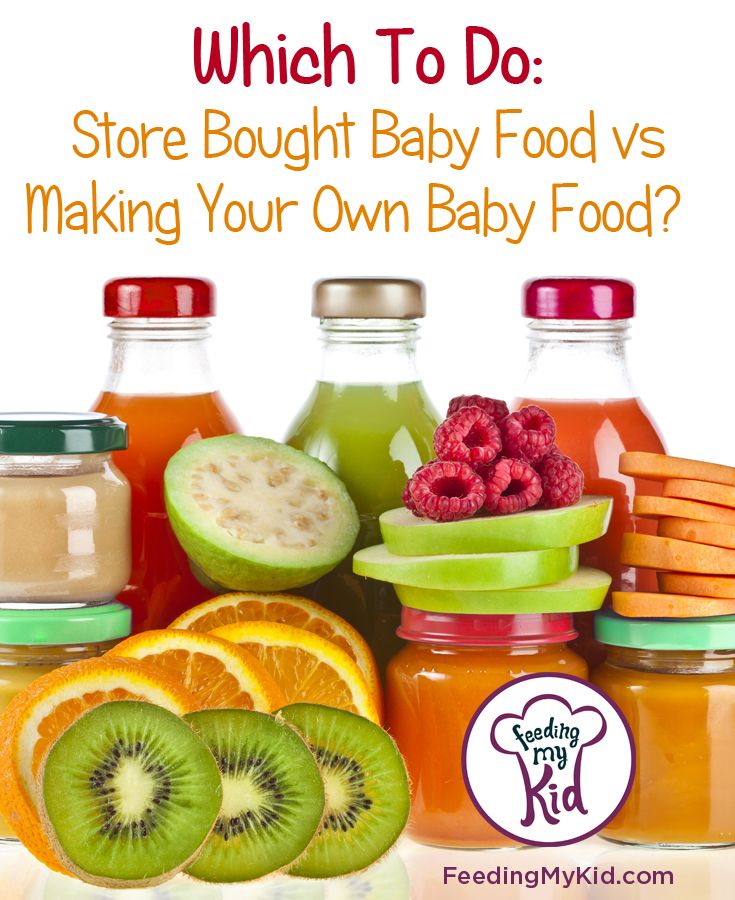
5. Tree nuts
Tree nuts could worsen eczema for many young children with a tree nut allergy. Examples of tree nuts include:
- almonds
- cashews
- walnuts
- pecans
Tree nut allergies are very common and may affect up to 4.9% of children and adults (18).
Unfortunately, tree nut allergies can be very serious, and some research suggests that more severe reactions to tree nuts are often associated with severe cases of eczema, asthma, and seasonal allergies (19).
In addition to avoiding tree nuts specifically, your child may need to avoid foods that contain tree nuts, including pesto, nut butters, coconut products, and certain types of cereals, cookies, crackers, or candies.
6. Wheat or gluten
Wheat is a type of cereal grain and a staple ingredient in many foods, such as bread, pasta, and baked goods.
Gluten is a specific protein found in wheat, barley, and rye that gives dough its structure and elasticity.
For those with a wheat allergy, consuming products that contain wheat may worsen eczema and could also cause other symptoms, including hives, asthma, and digestive issues (20, 21).
Eczema and skin rashes can also be caused by a sensitivity to gluten, as well as by celiac disease, an autoimmune condition that triggers an immune reaction when gluten-containing foods are consumed (22, 23, 24).
While there is no test available to diagnose non-celiac gluten sensitivity, your child’s pediatrician can use a skin or blood test to help determine if your child has celiac disease or an allergy to wheat.
7. Peanuts
Peanuts are a common allergen and are associated with several skin reactions, including rashes, hives, itching, and eczema (25).
Peanut allergies are especially common among babies and toddlers, as most peanut allergies appear within the first 2 years of life (25).
Additionally, some research shows that peanut allergies are more common among infants with moderate to severe eczema (26).
If peanuts cause flare-ups of eczema for your baby or toddler, try swapping other ingredients into your favorite recipes instead, such as seeds or seed butters.
SummarySome of the most common foods that cause allergies in infants and toddlers are dairy, fish, shellfish, soy products, wheat, peanuts, tree nuts, and eggs.
Several foods can be beneficial for eczema and may help reduce symptoms such as itching and inflammation.
For example, fruits and vegetables are rich in antioxidants, which are compounds that can protect against oxidative stress, cell damage, and inflammation (27).
Although studies in humans are still limited, some research suggests that reducing oxidative stress could play a role in managing eczema (28).
Increasing your intake of probiotics through fermented foods or supplements may also be helpful.
According to one review of 13 studies, certain strains of probiotics were effective at reducing eczema severity in children. These strains included Lactobacillus fermentum and Lactobacillus salivarius (29).
However, more research is needed because other studies have found that probiotics do not have a significant effect on symptom severity or quality of life for those with eczema (30).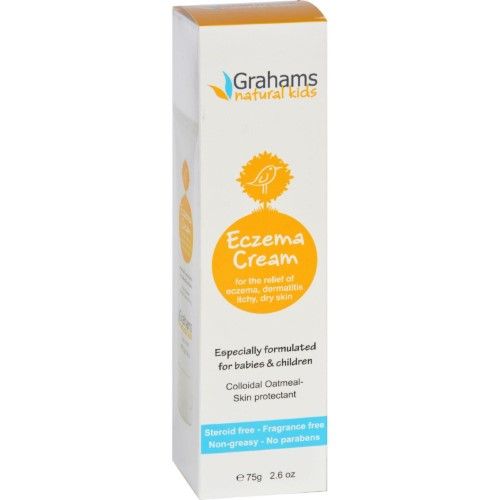
SummaryIncluding more foods rich in antioxidants and probiotics in your child’s diet could be beneficial for eczema, but more research is needed.
For many babies and toddlers, diet can play a key role in managing symptoms of eczema.
While certain foods can make eczema symptoms worse, others may decrease inflammation and oxidative stress, which could reduce symptoms.
However, it’s best to talk with a pediatrician or dietitian before making any changes to your child’s diet, especially because eliminating certain foods from their diet could make it harder for them to meet their nutritional needs.
Additionally, keep in mind that many other factors can contribute to eczema and some children may also need other types of treatment to help relieve symptoms.
Just one thing
Try this today: Consider experimenting with some at-home remedies for your child’s eczema. Check out this article for a few ideas to help provide relief for your baby or toddler.
Eczema: what is it, symptoms, causes, types, treatment and diet
Eczema is a chronic inflammatory skin disease of an allergic nature. The causes of the onset and development of pathology have not yet been studied, but it is believed that allergic diseases and genetic prerequisites are provoking factors. Treatment of eczema is carried out successfully today. You just need to turn to experienced professionals.
What is eczema?
This is a disease characterized by inflammatory processes and characterized by:
- A large number of developmental provoking factors
- Many variants of rash
- Tendency to relapse
- Highly resistant to treatment
Typically, an eczema rash concentrates on areas such as:
- Neck
- Knee bends
- Elbows
- Ankles
Symptoms of pathology can periodically increase. Such attacks last from a couple of hours to several days.
Classification
In accordance with the characteristics of the course of the pathological condition, the following are distinguished:
- Acute eczema. Her symptoms usually persist for 1-2 months
- Subacute. Symptoms of this pathology are less pronounced. In this case, the pathology can accompany the patient up to 6 months
- Chronic. In this case, the disease can proceed for several years. Periods of relapses follow remissions
There are several types of pathology:
- True. Such eczema is characterized by a chronic course. Exacerbations occur frequently and are accompanied by the appearance of symmetrical foci of inflammation. At first, areas of the skin turn red and swell. After that, small bubbles form on them. Over time, they open with the release of exudate (a small amount of liquid)
- Microbial. This form of pathology is characterized by the formation of deep ulcers and fistulas. Pathology is accompanied by severe itching.
In the microbial form, foci of inflammation spread mainly to the legs
- Seborrheic. This form is characterized by rashes on the face (on the forehead, near the eyebrows, behind the ears) and the scalp. Complete restoration of the skin is possible only with correct therapy
- Children's. This form is characterized by a large amount of exudate
- Professional. This form of pathology is characterized by vivid manifestations. The rash can appear on various areas of the skin (usually those that come into contact with irritants). Irritants in occupational eczema can be either chemical or physical or mechanical. Usually, pathology is provoked by constant exposure to cosmetics, active chemicals, various plants, resins, metals (mainly nickel and chromium)
Reasons
Eczema, the treatment of which should only be carried out by professionals, is quite common.
Its causes include a number of internal and external factors.
Internal factors for the development of eczema:
- Disorders of the nervous system
- Pathologies of internal organs
- Genetic factors (heredity)
External factors provoking pathology:
- Increase or decrease in temperature
- Exposure to aggressive chemicals
- Influence of extracts of various plants, etc.
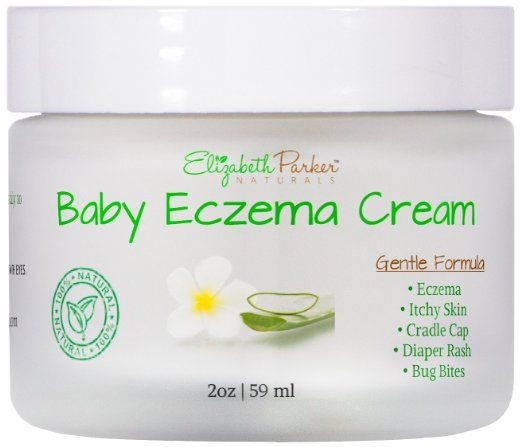
Often, a combination of internal and external factors provokes pathology.
Eczema can be the body's response to:
- Contact with pollen
- Excessive sweating
- Immune system disorders
- Stress
- Taking medications
- Reception of certain products
Before starting the treatment of eczema, it is very important to identify the causes that provoked the onset of pathology. Only in this case, the therapy will be as effective as possible and will not drag on for a long time.
Symptoms
All types of eczema are characterized by the following symptoms:
- Appearance of individual inflamed areas on the skin
- Appearance of rash
- Itching
- Blisters
- Wounds and fissures that cause permanent discomfort
- Increase in body temperature during exacerbations
- General malaise and weakness
- Cracking of the skin, its pronounced dryness and loss of elasticity
Symptoms of the pathological condition largely depend on the stage of development of eczema.
At the erythematous stage, the disease manifests itself in the form of inflamed areas. Gradually, the spots can merge into a separate affected area, which has an impressive area.
At the papular stage, the affected skin becomes unpleasant to the touch. It forms small nodules with clear boundaries and a bright red color.
At the vesicular stage, the nodules turn into vesicles.
At the stage of wetting, the bubbles gradually open, liquid is released from them.
In the cortical stage, the inflamed areas dry up. Yellowish crusts form on the skin.
At the stage of dry eczema, the skin begins to peel off. Formed crusts gradually disappear. Do not try to rip them off yourself! This can provoke the resumption of pathology.
Diagnostics
Treatment of eczema in adults is possible only after a thorough assessment of its symptoms and causes. That is why it is very important for a doctor to conduct a high-quality diagnosis.
It begins with the collection of anamnesis.
The doctor explains:
- The first cases of manifestation of signs of a pathological process
- Presence of intolerance to certain foods and drugs
- Allergic reactions
At the first appointment, the dermatologist performs a dermatoscopy. This study is aimed at studying the condition of the skin, mucous membranes and scalp.
Then laboratory tests are carried out.
For the diagnosis of eczema are assigned:
- Urinalysis
- Blood tests
- Serum immunoglobulin test
During the examination, the specialist determines the general state of health of the patient, evaluates individual vital signs. If necessary, a consultation with a nutritionist and an immunologist-allergist is carried out.
In advanced situations, a comprehensive immunological and allergological examination with sampling is also prescribed. As part of such a diagnosis, doctors are able to identify irritating factors that can provoke symptoms of eczema and allow you to quickly begin to treat the pathology.
As part of such a diagnosis, doctors are able to identify irritating factors that can provoke symptoms of eczema and allow you to quickly begin to treat the pathology.
Treatment
The main task of the doctor after making a diagnosis such as eczema is to reduce or completely eliminate the factors that provoke the onset of symptoms.
Treatment of pathology is conditionally divided into several stages:
- Taking general medications
- Diet modification
- Use of topical agents in the form of ointments, emulsions, creams, etc.
- Physiotherapy
The following groups of drugs are used for therapy:
- Antihistamines. Such remedies are prescribed for acute eczema
- Glucocorticosteroids. These hormonal preparations relieve inflammation and prevent the development of allergic reactions
- Diuretics. Such funds are recommended for severe edema
- Tranquilizers. These drugs allow you to eliminate itching, ensure a sound and healthy sleep of the patient, his good rest even with severe discomfort in the acute stage of eczema
- Enterosorbents.
 These funds allow you to quickly remove all the products of intoxication from the intestines
These funds allow you to quickly remove all the products of intoxication from the intestines - Vitamins of group B, aimed at normalizing the functioning of the nervous system
- Antibiotics. These funds are prescribed if, as a result of the diagnosis, it turned out that eczema is provoked by the action of aggressive microorganisms
Locally, applications with pastes and ointments are usually prescribed, which have:
- Antipruritic
- Anti-inflammatory action
- Antiseptic properties
Compositions of preparations for external use are often selected individually. In some cases, "talkers" are prescribed, which are prepared in pharmacies according to a doctor's prescription.
Important! It is strictly forbidden to use folk remedies, various oils, plant extracts, etc. for the treatment of eczema. They are able not to stop the development of the pathological process, but to provoke it.
With regard to physical therapy, patients are usually prescribed:
- UV
- Magnetotherapy
- Electrophoresis
Treatment of weeping eczema is carried out with the obligatory use of drugs that allow you to dry the skin and ensure the elimination of external signs of pathology. Treatment of other forms of the disease also has individual specificity. The attending physician will tell you about all the subtleties.
Treatment of other forms of the disease also has individual specificity. The attending physician will tell you about all the subtleties.
There are also general recommendations that should be followed by all patients suffering from the disease.
- Avoid skin contact with aggravating substances (if such substances are identified through tests and samples)
- Dieting. Cocoa, citrus fruits and chocolate should be completely excluded from the diet
- Skin care only with products recommended by a physician
- Elimination of nervous overload and stressful situations
Diet
The basis for the recovery of patients with eczema is often a properly selected diet. When selecting the products you need, the doctor takes into account both the general state of health and the stage and form of the pathology, as well as the presence of concomitant diseases.
There are also general recommendations regarding nutrition.
All patients during an exacerbation should:
- Avoid spicy, salty and smoked foods
- Refuse sweets
- Eliminate citrus fruits, eggs, alcoholic beverages, dairy products and processed foods from the diet
The diet should include:
- Green
- Lean cereals
- Vegetables
During periods of remission, it is desirable to use zucchini and pumpkin, watermelons, gooseberries, lingonberries, currants and cranberries, nuts. Patients who adhere strictly to the diet usually improve rapidly. After a month, the diet can be expanded.
With eczema, the following foods and drinks are strictly prohibited:
- Coffee and cocoa
- Sweets
- Fatty meat
- Tomatoes
- Garlic
- Buns and other pastries
- Melon
- Grenades
- Beetroot
- Strawberry
- Honey
It is advisable to use only those products that are hypoallergenic. A complete list will be given to you by your doctor.
A complete list will be given to you by your doctor.
Benefits of treatment at MEDSI
- Comprehensive diagnosis of eczema. The examination includes laboratory tests, dermatoscopy and video dermatoscopy. Diagnostics is carried out on modern equipment. We have our own laboratory, which allows us to provide patients with test results in the CITO mode (urgently)
- Individual selection of methods for the treatment of eczema in adults and children. Therapy is prescribed taking into account the stage of the pathological process and the characteristics of its course
- Use of modern preparations. Patients are prescribed anti-inflammatory, disinfectant and other drugs that have been developed recently, but already have proven effectiveness
- Carrying out modern physiotherapy procedures. Our clinics offer UVA therapy, ozone therapy, magnetotherapy. The combination of modern techniques allows to achieve pronounced treatment results in the shortest possible time
- Treatment of eczema with laser devices.
 Our clinic has the Excilite µ system. It belongs to the latest generation of excimer lasers. The procedures are painless and do not cause discomfort in patients. At the same time, the treatment of signs of eczema with such a system takes a minimum of time
Our clinic has the Excilite µ system. It belongs to the latest generation of excimer lasers. The procedures are painless and do not cause discomfort in patients. At the same time, the treatment of signs of eczema with such a system takes a minimum of time
To make an appointment with a doctor, just call +7 (495) 7-800-500. Reception is possible at a convenient time for you in a comfortable environment.
Do not delay treatment, see a doctor now:
- Dermatologist appointment
- Treatment of nail diseases, care and restoration
- Treatment of eczema
Proper and Healthy Nutrition for Eczema
One of the names for a fairly common disease of eczema is atopic dermatitis. The disease is characterized by wet or dry rashes, which are accompanied by peeling and itching. Most often, eczema occurs on the palms and hands, on the soles of the feet, and less often on the face. As well as the treatment of the spine and joints, our clinic offers various treatment options and a doctor's prescription of a diet for eczema on any part of the body, including the hands, taking into account the results of the studies carried out and the definition of the type of disease.
Most often, eczema occurs on the palms and hands, on the soles of the feet, and less often on the face. As well as the treatment of the spine and joints, our clinic offers various treatment options and a doctor's prescription of a diet for eczema on any part of the body, including the hands, taking into account the results of the studies carried out and the definition of the type of disease.
How the symptoms appear
The disease begins with local rashes such as "urticaria". Then tangible symptoms of eczema appear in the form of constant itching and skin burning. The following factors can become the cause of this condition:
- any external influences, for example, chemical or thermal burns, mechanical damage, etc.;
- somatic internal disorders: malfunctions of the endocrine system, gastrointestinal tract, genetic predisposition;
- allergic manifestations to various irritants: wool, pollen, food;
- nervous disorders and stress.

Most often this disease affects young women, less often - men. The danger of the disease lies in the fact that in the absence of treatment and adherence to a diet for eczema, it becomes chronic, which really reduces the chances of a favorable prognosis in treatment.
Foods to avoid
Proper nutrition for eczema is an effective addition to the main treatment. But to make sure which form the diseased has, you need a diagnosis and consultation with a doctor. The main thing that needs to be observed in the diet for eczema is to eat only those foods that are cooked in the right way, and the content of carbohydrates and fats in which does not exceed acceptable levels.
Be sure to take into account that many of the foods have the properties of allergens, so they must be excluded from the diet so as not to exacerbate the course of the disease. Basically, the list of such products is limited, but for many patients, due to eating habits, it is not easy to refuse them. However, a diet for eczema in adults will help avoid relapses, and make remission more stable. Therefore, it is recommended to exclude from the diet:
However, a diet for eczema in adults will help avoid relapses, and make remission more stable. Therefore, it is recommended to exclude from the diet:
- flour confectionery containing honey, chocolate, butter;
- tangerines, grapefruits, oranges, lemons, pineapples, mangoes, as these fruits are strong allergens;
- smoked meats, fish and preserves richly flavored with spices;
- marinades, pickles, hot sauces, mayonnaise;
- all alcoholic beverages, including beer and low-alcohol drinks, as well as coffee.
These are not so severe restrictions that you can get used to and not be hungry. On the contrary, following the doctor's recommendations regarding dietary nutrition helps patients to be more organized and responsible, and also to remember that only the activities carried out in the complex make it possible to get rid of the disease forever. After all, this skin disease is not a sentence!
Acceptable products for food
Having found such symptoms and manifestations of the disease, in no case should you self-medicate and prescribe treatment yourself. The doctors of our clinic will conduct an examination and give recommendations on how to make a diet for eczema, as well as an approximate menu, taking into account the course and form of the disease.
The doctors of our clinic will conduct an examination and give recommendations on how to make a diet for eczema, as well as an approximate menu, taking into account the course and form of the disease.
Which products are recommended? It must be taken into account that you can cook food only boiled, stewed, steamed. Among such products:
- lean meat of dietary grades: rabbit, chicken, turkey;
- hypoallergenic cereals for cereals and soups: buckwheat, rice, pearl barley;
- fish - only sea, fat-free and boiled;
- fermented milk products in the absence of allergies are allowed unlimitedly: cottage cheese, kefir, regular yogurt, yogurt, but only on the condition that they do not contain aromatic additives and preservatives.
High-protein, plant-based foods, in particular beans, are the best dietary option to get enough of the right amount of essential nutrients for the body.




